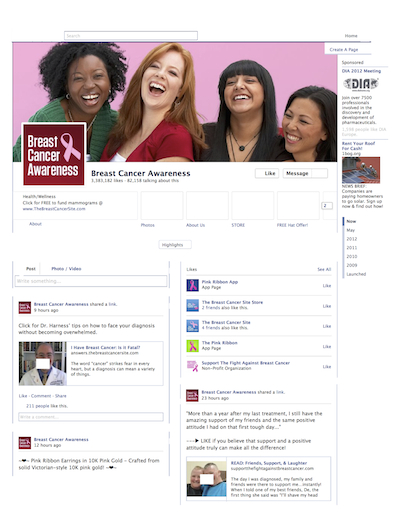 Researchers from Harvard and Stanford have published a paper in the Journal of Medical Internet Research (JMIR) that explores how much public data exists on Facebook about several popular health conditions.
Researchers from Harvard and Stanford have published a paper in the Journal of Medical Internet Research (JMIR) that explores how much public data exists on Facebook about several popular health conditions.
The study authors, who are from Partners HealthCare's Center for Connected Health, Harvard Medical School, and Stanford University School of Medicine, first identified the 20 most searched health terms on Google. The terms they discovered included 'cancer', 'diabetes', 'stomach', 'herpes', 'back pain', 'human immunodeficiency virus' (HIV), 'blood pressure', 'thyroid', 'breast cancer', 'arthritis', 'diarrhea', and 'stroke'.
The team chose Facebook because a Pew research project found that, in general, 71 percent of online adults use Facebook, while only 17 percent use Instagram, 21 percent use Twitter, and 22 percent use LinkedIn.
"We found that a search of Facebook for common health conditions provided a large number of irrelevant pages," the researchers said in the paper. "In addition, most pages were devoted to marketing/promotion and relatively few pages were devoted to social support. Social support was especially underrepresented in pages for health conditions for communicable diseases."
To address these issues, they added that organizations need to launch more public health interventions on Facebook so that users of the social network will be able to find relevant information easily. But these organizations should also note that fewer users might actively engage with the page because of the stigma associated with health conditions.
After searching for Facebook pages about these terms, they recorded the top 50 pages results for each health condition and the number of "likes" each page received. The researchers found 50 pages each for 18 of the conditions, but only 48 pages for anemia and 5 pages for flu symptoms, for a total of 953 pages.
When researchers narrowed down all the relevant pages and filtered out ones that weren't in English, they were left with 522 relevant pages. Breast cancer and diabetes had the most relevant pages, 50 each, while there were 49 relevant pages for cancer, thyroid, and arthritis. Stroke and HIV had the least relevant pages, with 10 each.
All pages were next categorized by type of content. They found that 32.2 percent of the pages were for marketing and promotion, 20.7 percent were created to provide information and awareness of a health condition, 15.5 percent were "Wikipedia-type" pages, and 9.4 percent were created for general support.
The researchers' last task was measuring engagement that users had with the pages. There were around 22 million likes across all pages, but 86.9 percent of the likes came from cancer and breast cancer pages. AIDS and diabetes received 4.5 percent of the likes, HIV and lupus received 1.1 percent of the likes and all remaining pages received less than 2 percent of the likes total.
















